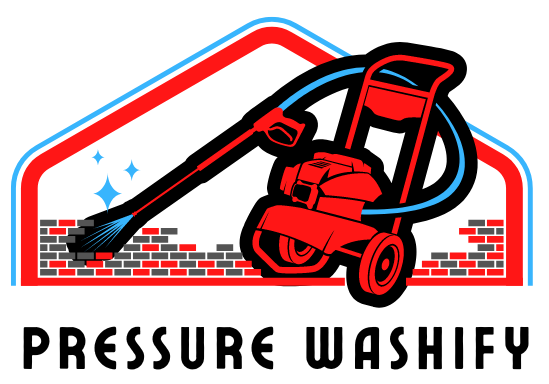Affiliate Disclaimer: This post may contain affiliate links, meaning we get a commission if you decide to make a purchase through our links, at no extra cost to you.
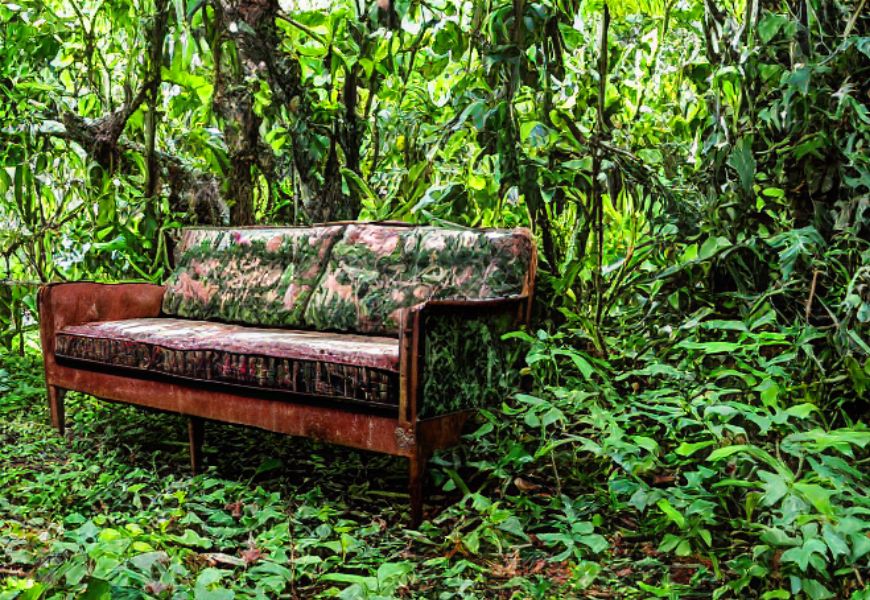
Cleaning a couch may not appear hard. However, removing stains can be challenging and take a while for people unfamiliar with them or how to remove them. You own a pressure washer and have a dirty couch but can you pressure wash a couch?
Yes, you can. However it may not be recommended for all types of couches.
Understanding how to use this method can make the process easier and more effective.
Factors to Consider Before Pressure Washing a Couch
When determining if pressure washing is an appropriate method for cleaning a couch, there are several factors to consider.
Material of the Couch
The first thing you should consider is the material of your couch. There are many couch materials, including fabric, leather, and synthetic materials. Each material has its own unique properties and reacts differently to pressure washing.
Fabric couches are more vulnerable to water damage. Leather couches, on the other hand, may lose their color or fade when exposed to strong water spray.
It’s crucial to research how your couch’s material will react to pressure washing before you try this cleaning method.
Age and Condition of the Couch
Age and condition are important factors when considering pressure washing as a cleaning method for your couch. Pressure washing may not be suitable for all couches.
Older couches or those in bad shape may not be able to handle the high-pressure water spray. This could cause additional damage or even destruction. It is advisable to use a mild cleaning method on fragile or worn couches. Pressure washing should be avoided.
Manufacturer’s Recommendations and Warnings
Finally, it’s essential to consult the manufacturer’s recommendations for your couch. Many couch manufacturers provide specific care instructions and cleaning guidelines to prevent damage to their products.
Do not use a pressure washer or water-based cleaning methods if the manufacturer explicitly advises against it. Following their guidelines is the best course of action. Choose an alternative cleaning method instead.
Potential Risks of Pressure Washing a Couch
It is important to know the risks associated with pressure washing your couch before proceeding.
Water Damage and Mold Growth
One of the most significant risks of pressure washing a couch is water damage and mold. Couches are not waterproof. High-pressure water spray can seep into fabric, cushions, and internal components. This can lead to water damage, which isn’t safe for your couch.
Fading of Fabric
Another risk associated with pressure washing a couch is the potential for discoloration and fading of the fabric. High-pressure water spray can remove the color and protective coatings from certain materials. This can result in uneven coloring or faded spots. It can be especially problematic for couches with delicate or brightly colored fabrics.
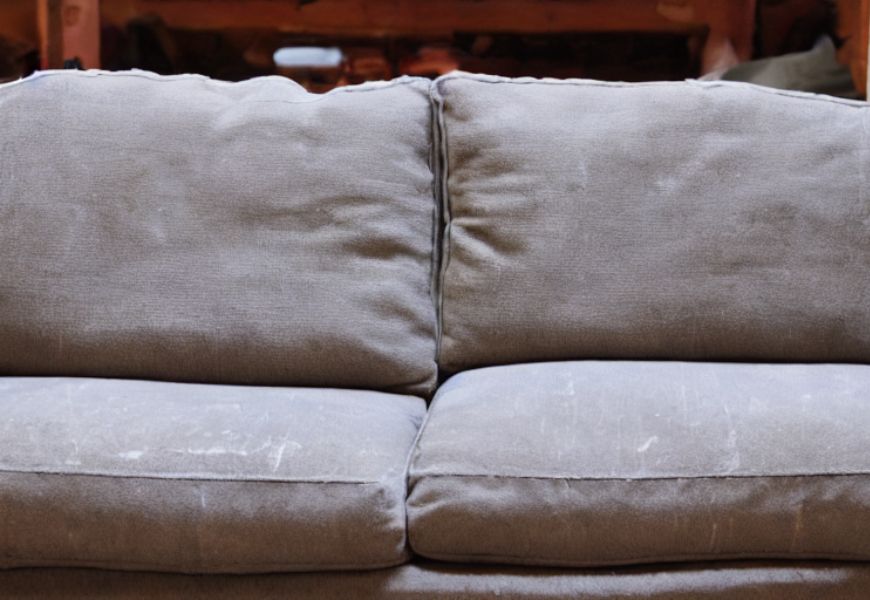
Weakening of Fabric and Seams
Pressure washing can also weaken the fabric and seams of your couch. High-pressure water spray can weaken the fabric. This happens when the fibers break down. As a result, the material loses strength and durability.
Damage to Internal Components
Finally, pressure washing can cause damage to the internal components of your couch, such as cushions, springs, and framing. High-pressure water spray can push water into various parts of your couch.
This can cause rust, corrosion, or other forms of damage. These effects can weaken the structure and comfort of your couch.
Step By Step Guide to Pressure Washing a Couch
While pressure washing a couch is generally not recommended due to the potential risks and damage it can cause, if you still decide to proceed with this method, it’s essential to follow a careful and methodical process. Here is a step-by-step guide to pressure washing a couch:
Please note that this guide is for informational purposes only, and pressure washing may damage your couch. Proceed at your own risk.
- Prepare the area: Choose an outdoor location with proper drainage for pressure washing your couch. Make sure the area is clear of any electrical outlets or items that could be damaged by water.
- Remove cushions and other detachable components: Take off any removable cushions, pillows, and other components from the couch. These items should be cleaned separately using a more suitable method, such as spot cleaning or steam cleaning.
- Vacuum the couch: Use a vacuum cleaner with an upholstery attachment to remove any loose dirt, dust, and debris from the couch’s surface.
- Choose the right pressure washer settings: Select a low-pressure setting and a wide-angle nozzle (usually marked as 40 degrees) on your pressure washer to minimize the risk of damage. If your pressure washer allows for detergent use, choose a mild detergent specifically designed for upholstery cleaning.
- Test on an inconspicuous area: Before pressure washing the entire couch, test the water pressure and detergent (if using) on a small, hidden area of the couch to ensure it doesn’t cause damage or discoloration.
- Pressure wash the couch: Stand at a distance of at least 3-4 feet from the couch and begin pressure washing using a consistent, sweeping motion. Make sure to keep the nozzle moving to avoid focusing the water spray on one area for too long.
- Rinse thoroughly: If you used detergent, switch to clean water and rinse the couch thoroughly to remove any soap residue.
- Dry the couch: Use a clean, dry towel or cloth to blot away as much excess water as possible. Then, allow the couch to air dry completely in a well-ventilated area, preferably under direct sunlight. This may take several days, depending on the weather and humidity.
- Inspect for damage: Once the couch is completely dry, inspect it for any signs of damage, such as water stains, mold, or weakened fabric. If you notice any issues, consult a professional upholstery cleaning service for assistance.
We recommend using Simpson Cleaning’s 80142 3600 PSI Universal 5-N-1 Quick Connect Pressure Washer Nozzle. It saves you time and effort with the 5-in-1 twisting changeover feature. Gone are the days of manually switching out nozzles or wasting time fumbling with complicated attachments.
Best Quick Connect 5 in 1 Nozzle
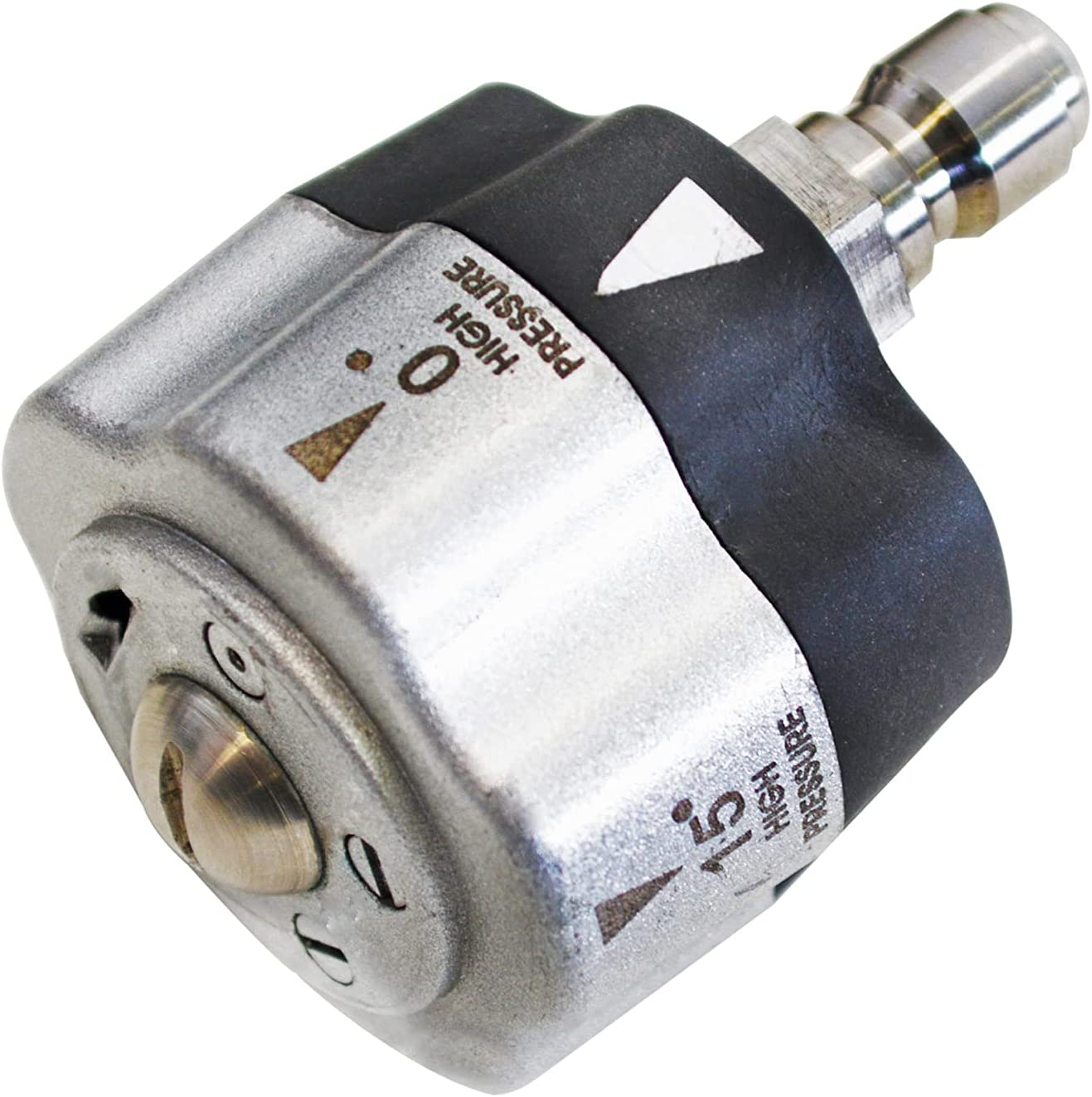
Simpson Cleaning Universal 5-N-1, Quick Connect
- Up to 3600 PSI
- 0, 15, 25, 40 Degrees & Soap
- Easy Twist Changeover
- Time-Saving
If you’re in market looking for a pressure washer, we highly recommend the Active 2.0 electric pressure washer. Check out our detailed review here.
Alternatives to Pressure Washing a Couch
If you’ve determined that pressure washing may not be the best method for cleaning your couch, don’t worry! There are alternatives to pressure washing for cleaning your couch.
Steam Cleaning
Steam cleaning is a popular and effective method for cleaning upholstery, including couches. This method uses hot water vapor to loosen dirt, grime, and stains, which are then extracted using a specialized vacuum.
Spot Cleaning with Appropriate Cleaning Solutions
For smaller stains or spills, spot cleaning with appropriate cleaning solutions can be an effective way to maintain your couch’s cleanliness. Ensure you use a cleaning solution made for your couch’s fabric. Follow the manufacturer’s directions carefully.
Test the cleaning solution on an area of your couch that is not easily seen. This will help to ensure it won’t cause discoloration or damage. Before applying it to a visible stain, make sure to test the solution first.
We recommend using the Resolve Multi-Fabric Cleaner and Upholstery Stain Remover for best results and easy application.
Resolve 22 fl oz Multi-Fabric Cleaner and Upholstery Stain Remover
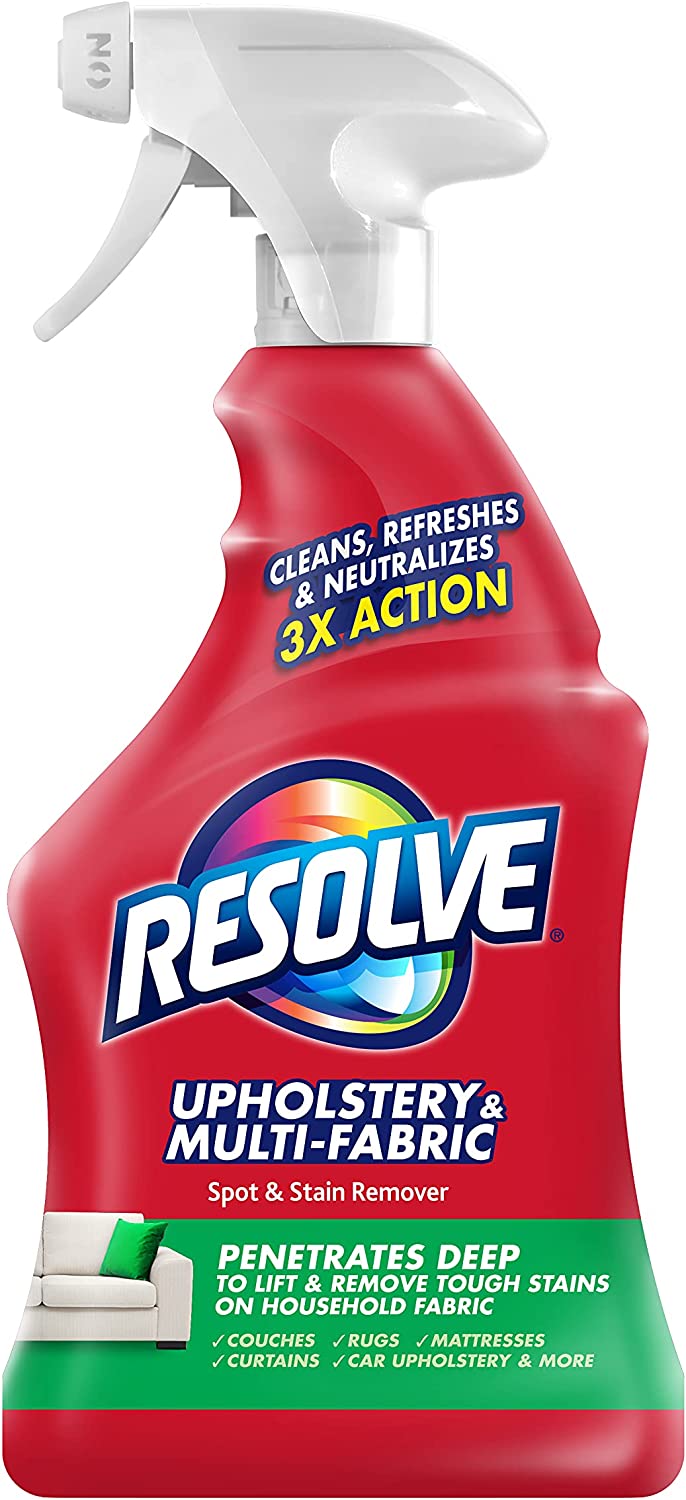
- Cleans Up To 1600 square ft
- Safe for most household fabrics
- Removes Pet Odor
Professional Upholstery Cleaning Services
If you’re unsure about the best cleaning method for your couch or need assistance with a particularly stubborn stain, consider hiring a professional upholstery cleaning service.
These professionals have the expertise and equipment to safely and effectively clean your couch without causing damage.
Tips for Maintaining a Clean Couch
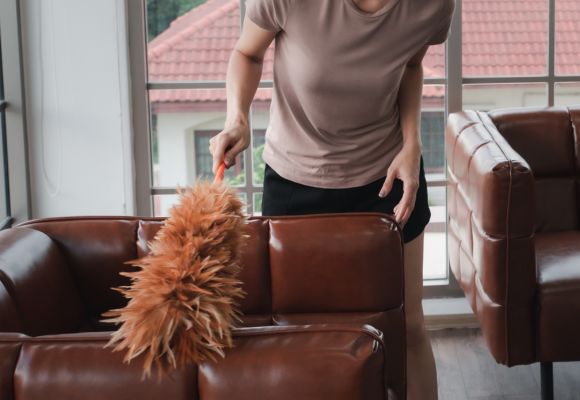
To help you keep your couch in tip-top shape, we’ve compiled a list of essential tips that will ensure it stays fresh and clean for years to come.
- Vacuum your couch regularly. This will help in removing dirt and debris which makes your couch look dull and dirty.
- Promptly address spills and stains. Use a mild detergent and water solution to gently clean the affected area.
- Use protective covers to shield your couch.
- Try to rotate and flip your cushions at least once a month. This will prevent cushions from getting too worn or flattened.
Conclusion
Pressure washing may seem like a good way to clean a couch. However, it is not recommended for all types of couches. This is because it can cause damage to the fabric, cushioning, and structure of the furniture.
You can also choose alternative cleaning methods for your couch, like vacuuming and spot cleaning. Also, use protective covers to keep it clean and make it last longer.
Take the right precautions and treat your couch with care. This will help keep it comfortable and attractive in your living space for years.
FAQs
Why should I consider pressure washing my couch instead of traditional cleaning methods?
Pressure washing offers a more efficient and thorough cleaning process by using high-pressure water to penetrate deep into fabric fibers, removing embedded dirt, allergens, and stains that traditional methods may struggle to address.
Is pressure washing safe for all types of couch fabrics?
While pressure washing is generally safe for most outdoor furniture fabrics, it’s crucial to check the manufacturer’s recommendations and conduct a small patch test in an inconspicuous area to ensure compatibility. Delicate fabrics may require lower pressure settings or alternative cleaning methods.
What pressure washer settings should I use for couch cleaning?
Opt for a low-pressure setting, ideally below 500 PSI, to prevent potential damage to the fabric. Additionally, use a wide-angle spray nozzle to distribute water evenly without causing excessive force on a specific area.
Can pressure washing remove deep-set stains on a couch?
Pressure washing is effective in removing many stains, but the success depends on the type of stain and the fabric. For tough, deep-set stains, consider pre-treating with a suitable stain remover before pressure washing for better results.
How do I protect my couch from water damage during pressure washing?
Cover any vulnerable areas, like zippers and seams, with waterproof materials or plastic bags. Ensure that the pressure washer nozzle is at an appropriate distance from the couch to avoid excessive water penetration.
Are there specific detergents or cleaning solutions recommended for pressure-washing couches?
Choose a mild detergent or a specialized upholstery cleaning solution designed for pressure washers. Avoid using harsh chemicals that could damage the fabric or pose a risk to the environment.
Can I pressure wash indoor couches, or is it only suitable for outdoor furniture?
Pressure washing indoor couches is not recommended, as it can saturate the fabric and create a breeding ground for mold and mildew. Stick to traditional cleaning methods for indoor furniture.
How do I ensure proper drying after pressure washing my couch?
Allow the couch to dry thoroughly in a well-ventilated area. If possible, place it in direct sunlight to expedite the drying process. Please avoid using the couch until it is completely dry to prevent mold growth.








